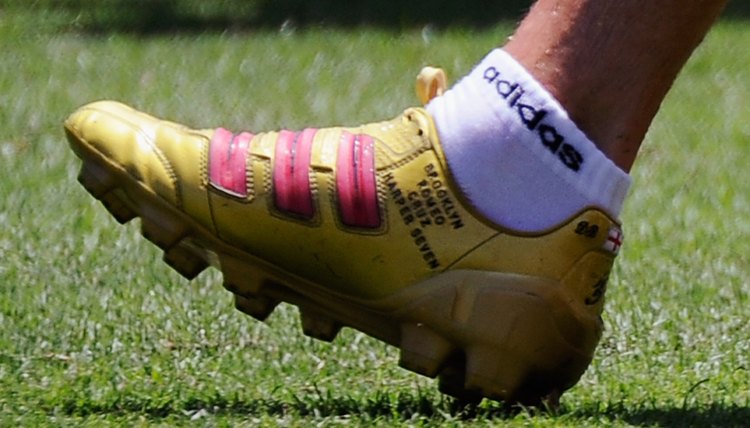Facts About Soccer Cleats

The soccer cleat is an essential piece of equipment for most players. Despite its importance, most players don't give much thought to their footwear. But there is actually a lot to be known about cleats, from their history and world records to the rules about cleats and the types available.
History
The earliest known pair of soccer boots belonged to England's King Henry VIII in the 16th century. But it was not until the 19th century that the first studded cleats were developed. These cleats consisted of heavy leather work boots with steel toes, that had metal studs hammered into the sole for traction. The modern soccer cleat was developed in the 1920s with the advent of replaceable studs.
Rules
Surprisingly, the Laws of the Game -- the rules that govern soccer internationally -- do not require players to wear cleats. The rules only require players to wear footwear. Many competitive soccer players elect to wear cleats when playing on natural grass, however, they may opt to use turf shoes when playing on artificial turf. Children and recreational players may choose to wear sneakers rather than cleats.
World Record
In 2009, the U.S. Soccer Foundation set a world record for the longest chain of soccer cleats. There were 11,904 cleats tied together, surpassing the previous record of 10,500 cleats. The record was set at a conference of the National Soccer Coaches Association of America in St. Louis, Missouri. The cleats were then donated to underprivileged children.
Types
There are three different types of cleats, designed for different surfaces. Soft ground cleats have removable studs or blades that vary in size and are designed for soft fields. Firm ground cleats have studs or blades built into the sole of the shoe that are designed for typical fields with a normal amount of give to the surface. Hard ground cleats have dozens of tiny grips across the sole to provide traction on extremely hard ground and artificial turf.
